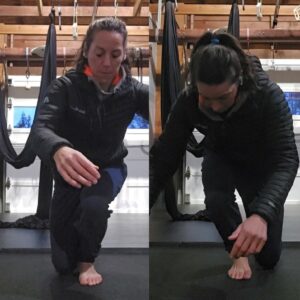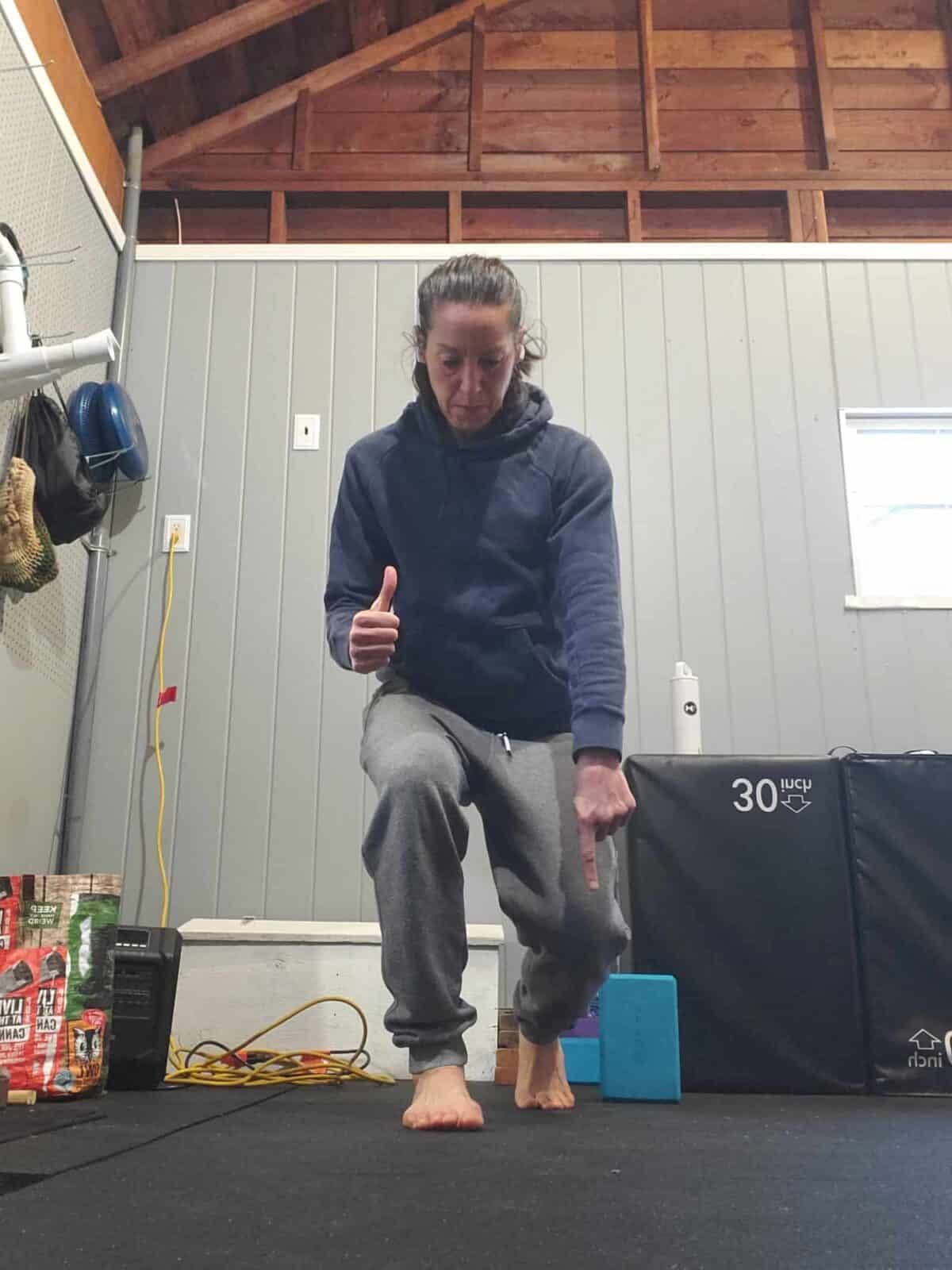Part 1.
Pairs. Roles. Asymmetry. The body knows and the body has ways. Understanding the differences between the halves helps you appreciate them. One side isn’t ‘good’. The other isn’t ‘bad’. They hold a function within the system.
Here’s a big picture view that shows how to distinguish up leg and down leg, and which direction each leg is best at:
I’ll break this down into pieces in a moment, but first some insight as to how I came to associate leg job with arch preference, and arch preference with linear or lateral motion.
It must be known that the eyes behind this finding belong to Adarian Barr. He sent me this analysis of a query I had about strain, stress, and the deformity of the rib cage:
That referred to bow on the right foot works against the transverse arch.
But it is excellent for the longitudinal arch…

Which longitudinal arch? The medial. Why? The pinky pulls up on the right side. The first met gets loaded much more than the fifth:
The incline board exaggerates the grip of the foot (since the heel can’t help). I use the most dramatic angle to be able to feel the discrepancy. The right foot is biased toward the longitudinal arch, and the left foot is biased toward the transverse arch.
BREAKDOWNS
1. Determining Up Leg & Down Leg
Left leg goes forward and right leg goes back. The left leg/ side typically bears more weight when standing.
The front, up leg glute (L) gets me up and the back, down leg quad (R) gets me forward.

2. Arches & Direction
I use the bricks to minimize heel help (like the incline) and set arches. Right go down leg is great at going foward. It has a longitudinal arch bias. Left go up leg is great at going side to side. It has a transverse arch bias. Arch bias dictates directional preference:
Longitudinal arch = forward (& back)
Transverse arch = lateral (side to side)
3. Using Bias to Drive Intent
If symmetry IS a particular focus, you have to utilize different instructions to yield the desired result. One side can’t teach the other. It’s operating under a different set of rules:
I start lateral on the left leg, and then add in the forward. (The non-filmed reverse also worked: starting forward on the right leg, then adding in the lateral.) Instead of discouraging bias or preference, I use it. The front leg becomes the back leg. [Did you notice?]. The more we can get our mental judgement out of the way, the more we can notice and understand all that we’ve been missing.
Part 2.
Perpendicular vs. Parallel.
Up leg works the foward and back (parallel to ground). Down leg works the up and down (perpendicular to ground).
Note how the torso pitches to assist the forward or down when performing a knee tap on each side.

Same task, two different methods.
The squat (or down leg) keeps it vertical. The hinge (or up leg) brings the torso forward.
DETAIL: Where you place pressure on the foot influences whether you will squat or hinge. Inner edge brings knee in and you squat. Outer edge brings knee out and you hinge:
Step Ups & Shins
Up leg knee just keeps moving foward:
Down leg knee-ankle-weight shift stops half way:
Right-squat-down leg is what I would naturally step up high with. It has greater hip flexion.
Strength Training Application
Allow lateral shifting into preferred half movement:
Rack pull – torso pitch and lifted leg action:
Collisions
Down leg (hip) handles impact much better than up leg.
Foot placement (from air) – Up leg lands behind center of mass (push), down leg lands far in front (don’t fall):
Consider the jumping implications from these last two concepts.
An example:
Recognizing there are asymmetries helps you honor the role of each half and train how they work in pairs.

